Description
Several of our herbal blends are accented with tart, bright red hibiscus flowers. We are now pleased to offer 100% pure Egyptian Hibiscus!
The stunning deep magenta hue of this cup lets you know that it is packed full of bright zingy flavor. Often compared to cranberry, hibiscus is extremely tart – in fact about 15-30% of the herb is made up of organic acids including ascorbic, citric, malic, and tartaric acids, as well as a unique compound known as “hibiscus acid.” A cup of hibiscus infusion has about 10x as much Vitamin C as a cup of orange juice!
Technically, Hibiscus encompasses a very large genus of plants that grow in warm regions all over the world, also commonly called “rose mallow” or “rose of sharon.” One particular variety (Hibiscus sabdariffa) known as “roselle” is most often used for herbal infusions. Roselle is an annual with big showy flowers that boast white petals and a shiny scarlet calyx (the outer part of the flower that later transforms into seed pods). The unusually thick, fleshy calyces are removed from the plant, then dried, cut, and sifted to make a high quality herb which will infuse quickly into your teapot.
The vibrant crimson color is partly from anthocyanins – the same powerful antioxidants that can be found in blueberries and Kenyan Purple Tea. Hibiscus is used as an herbal tonic to boost the immune system, decrease inflammation, lower blood pressure, and maintain healthy cholesterol. It also has powerful cooling effects and mild diuretic properties (in the Middle East it is used as a gentle way to treat constipation).
Hibiscus drinks of many kinds are enjoyed all over the world. Very popular in Egypt, the infusion is called “karkadé” and is enjoyed hot and cold. In other parts of Africa, hibiscus drinks are flavored with mint and ginger. In Latin America, they call the plant “flor de jamaica” (because it was first introduced from the island of Jamaica) and add ginger, cinnamon, clove, and/or nutmeg to a sweet cold drink called “agua de jamaica” or just “jamaica” (pronounced “ha-MY-ca”) – you have probably seen it if you have ever been to a traditional taqueria, syrupy and cooling agua de jamaica pairs so well with a spicy lunch on a hot day! In the Caribbean, it is common to include white rum in this concoction. In Europe, they add lemon and rosehips to hibiscus for maximum Vitamin C. In Southeast Asia, they sometimes combine with tea leaves, and even make it into wine. In numerous cultures the seeds, stems, and greens of a wide variety of species are eaten in savory dishes, petals are candied for deserts, and some species are even made into fiber!
We encourage you to experiment with your own hibiscus blends – mix with green or black tea, rooibos, any type of sweet spices, lemon/lime, sugar or honey. Use cold hibiscus infusion to punch up fruit juices or cocktails, or whatever you want!
Steeping Time: 3-5 minutes
Water Temp: 212 F
Hibiscus flowers, cut
RECIPE: Make traditional Mexican “agua de jamaica” at home!
Ingredients:
2 qt water
¾ C – 1 C sugar (to taste)
1 C dried hibiscus
½ stick cinnamon
a few thin slices of fresh ginger (to taste)
orange or lime slices for garnish
Method:
1. Boil 1 qt of water with sugar, cinnamon, and ginger (for more exotic flavors, include a little clove, nutmeg, allspice, or other sweet spices)
2. Add hibiscus, remove from stove and cover, let sit for 20 minutes
3. Pour through a strainer. This concentrate may be refrigerated and stored for later.
4. When ready to serve, add the second qt of cold water (or ice). Feel free to water it down more if it is too sour for your tastes. Orange or lime slices make an excellent garnish.
Add a little lime juice or other fruit juice to give it more nuanced flavor. Also, we recommend trying it with some fresh mint leaves minced and sprinkled on top – not exactly traditional but oh so yummy – a perfect refreshment for a hot sunny day!
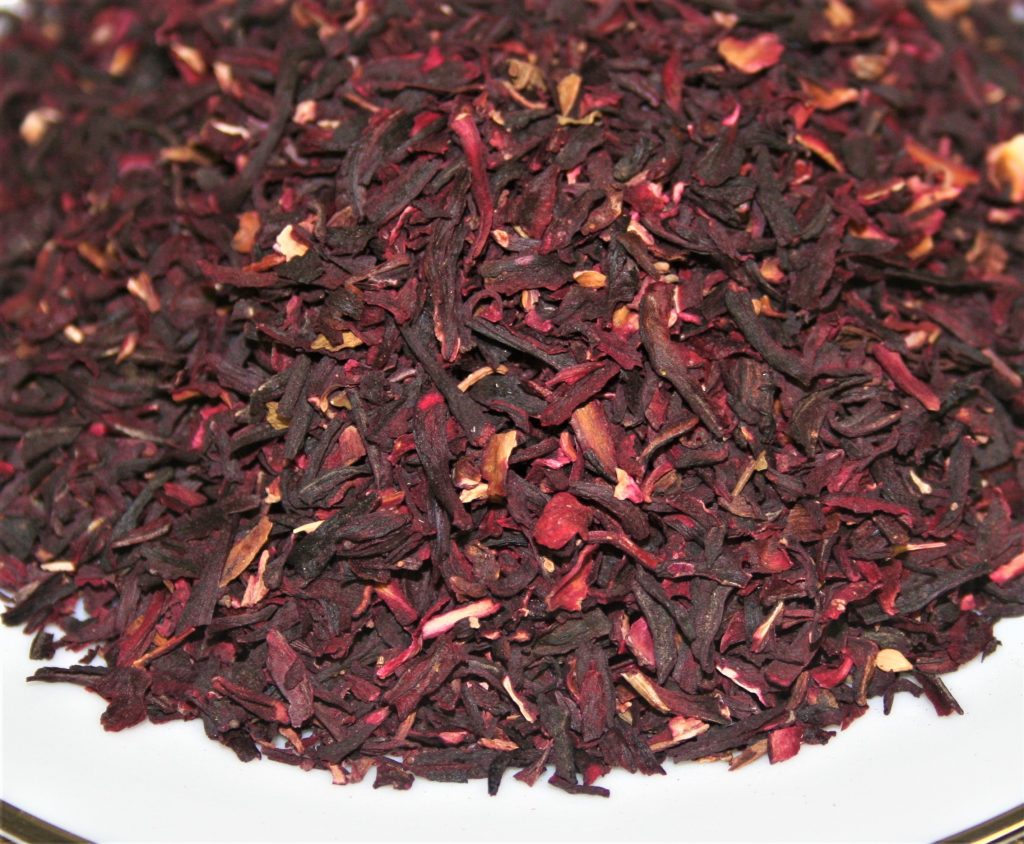
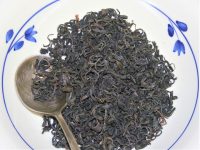
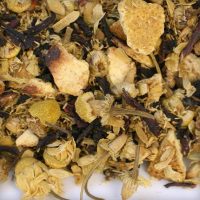
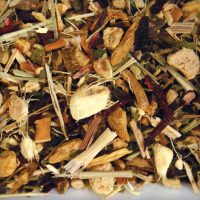
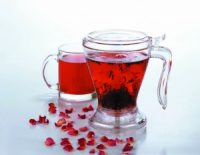

Reviews
There are no reviews yet.